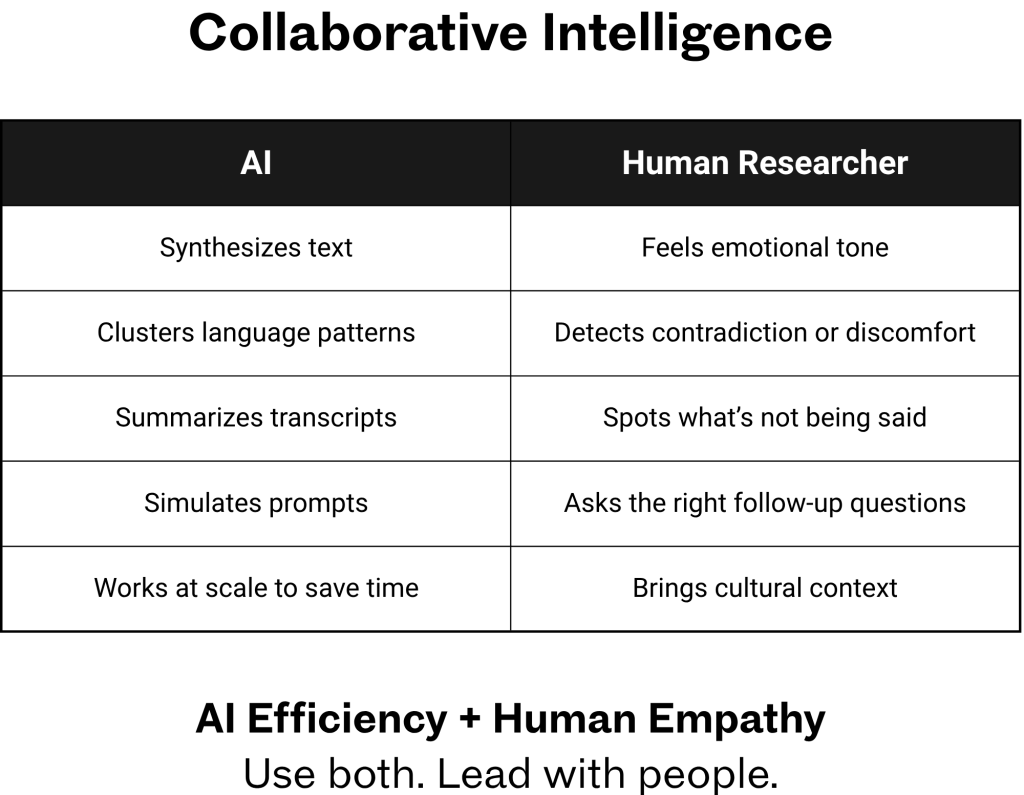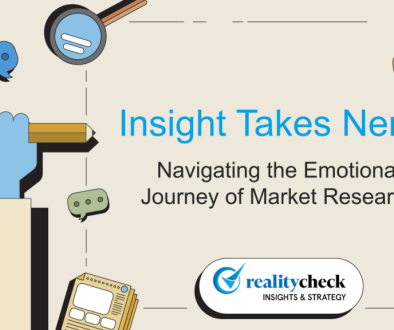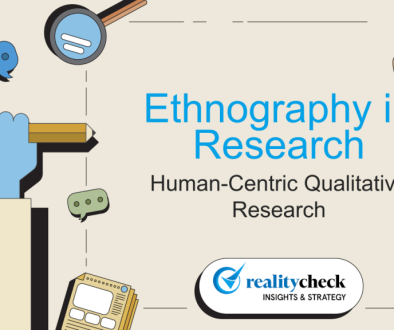Empathy: The Human Element of Market Research
In Brief
AI can synthesize text, surface patterns, and even simulate language with remarkable fluency — but it can’t feel. In a world where generative tools are everywhere, it’s tempting to offload insight work to machines. But real understanding — the kind that changes how a brand sees its audience — still requires something uniquely human: empathy.
The Rise of AI in Research
The last two years have brought an explosion of AI-powered tools in the research space. From language modeling to sentiment scoring to automated summaries of focus groups and online boards, the promise is clear: faster turnaround, less manual work, more scalability.
And the tools do deliver. AI can parse thousands of open-ended responses in seconds. It can generate themes, group sentiments, and even draft headlines. For overstretched research teams, that’s a major value add.
But it also raises an important question:
If the machine can summarize what people say, do we still need humans to interpret it?
What AI Can Do
AI has real value in research, especially in the early stages of processing and organizing qualitative data.
• Aggregate responses across large samples
• Cluster phrases and themes quickly
• Summarize discussions with surprising clarity
• Simulate prompts or personas to help test ideas
At RealityCheck, we use AI in all these ways. It’s a powerful co-pilot. But like any tool, its value depends on how it’s used — and what it’s used for.
What AI Can’t Do
AI can process language, but it cannot feel. It has no lived experience. No cultural memory. No emotional intuition.
It cannot sense the tension in a pregnant pause.
It cannot detect sarcasm, or double meaning, or subtle discomfort.
It doesn’t know when someone’s saying one thing but meaning another.
Insight isn’t just about what was said — it’s about what wasn’t. That’s something only humans pick up.
Empathy is the ability to feel with someone — to mentally and emotionally step into their experience. No algorithm, no matter how advanced, has that capability.
Why Empathy Still Drives Good Research
In qualitative research, empathy isn’t just a nice-to-have. It’s a core instrument.
It helps researchers:
• Recognize subtle emotional shifts in conversation
• Identify latent tensions or unmet needs
• Interpret behavior in cultural or psychological context
• Build trust — and open up deeper conversations
Empathy allows us to see the person behind the words. And in many cases, that’s where the insight lives.
The Future Is Collaborative, Not Competitive
AI isn’t the enemy of empathy. It’s a tool that, when used well, enhances what human researchers do best.
Let AI handle the mechanical — summarizing transcripts, clustering quotes, generating first drafts.
Let humans handle the meaningful — drawing connections, sensing nuance, and bringing empathy into interpretation.
At RealityCheck, we call this Collaborative Intelligence.

Don’t Automate Empathy
Empathy isn’t a formula. It can’t be batched or scaled by code.
In a world that’s rushing toward automation, empathy is the human edge that still cuts through.
It’s what lets us see our consumers not as data points, but as people. And when we see people clearly, we design better products, better stories, and better strategies.
So yes — use the tools. But don’t forget the feeling.
Let’s Talk
At RealityCheck, we blend the power of AI with the depth of human understanding. If you’re looking to bring more clarity — and empathy — to your next research project, get in touch here.

![[TEMPLATE] Blog Post Title Slides [TEMPLATE] Blog Post Title Slides](https://realitycheckinc.com/wp-content/uploads/2025/05/TEMPLATE-Blog-Post-Title-Slides.png)
![[TEMPLATE] Blog Post Title Slides [TEMPLATE] Blog Post Title Slides](https://realitycheckinc.com/wp-content/uploads/2025/07/TEMPLATE-Blog-Post-Title-Slides-1024x576-394x330.png)





















